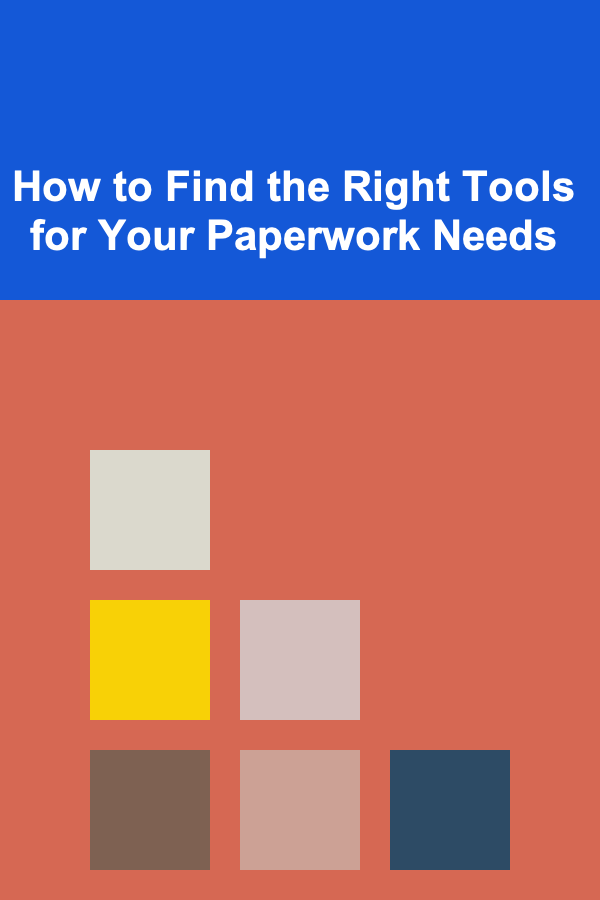
How to Build a Fashion Designer Portfolio That Gets You Hired
ebook include PDF & Audio bundle (Micro Guide)
$12.99$10.99
Limited Time Offer! Order within the next:

In the competitive world of fashion design, a well-crafted portfolio is your most important tool for showcasing your talents and securing a job in the industry. Whether you're a recent graduate, an aspiring designer, or an experienced professional looking to make a career change, your portfolio is the key to making a lasting impression on potential employers or clients. It serves as both your visual resume and your artistic expression, reflecting your creativity, skills, and design philosophy.
Building a fashion designer portfolio that gets you hired requires a combination of technical proficiency, aesthetic appeal, and a deep understanding of what employers and clients are looking for. In this article, we will walk you through the essential elements of a successful fashion design portfolio, as well as the steps you need to take to ensure it stands out in the competitive world of fashion.
Understand the Purpose of Your Portfolio
Before you begin building your portfolio, it's essential to understand its purpose. A fashion designer portfolio is not just a collection of your work; it's a carefully curated presentation of your skills, style, and vision. The goal is to showcase your unique approach to fashion design in a way that captures the attention of potential employers, clients, or collaborators.
In essence, your portfolio should:
- Highlight Your Creativity and Skills: Show off your design talent, technical skills, and creativity. Employers want to see not only how well you can design but also how well you can execute your ideas.
- Demonstrate Versatility: A good portfolio should display a range of designs, including various types of garments, materials, and design concepts. Versatility is important, especially if you plan to work for a wide variety of brands or companies.
- Communicate Your Design Philosophy: Your portfolio should give insight into your design process, influences, and overall aesthetic. This will help potential employers understand how you think as a designer.
- Serve as a Visual Resume: Your portfolio is your chance to introduce yourself to the world. It should be professional, polished, and free of any unnecessary distractions.
Know Your Audience
While it's crucial to develop a portfolio that showcases your best work, it's equally important to consider the audience you are presenting it to. Depending on the role you are applying for, you may need to tailor your portfolio to meet the expectations of specific employers or clients.
- High Fashion Designers: If you are targeting high-end fashion houses or luxury brands, your portfolio should reflect a sophisticated, couture-level style. Showcase intricate details, experimental designs, and conceptual fashion pieces.
- Ready-to-Wear or Commercial Designers: If you're applying for positions in the ready-to-wear or commercial fashion industry, focus on showing practical designs that are stylish, wearable, and marketable.
- Specialized Design: If you specialize in a specific niche, such as streetwear, sustainable fashion, or sportswear, make sure your portfolio reflects that. Show how your skills and interests align with the brand's aesthetic and target market.
Taking the time to research potential employers or clients will help you shape your portfolio to appeal to their specific needs and expectations.
Select Your Best Work
A fashion design portfolio is not a scrapbook of everything you've ever created. It's a curated selection of your best and most relevant work that reflects your skills, creativity, and experience. When selecting pieces to include in your portfolio, keep the following in mind:
Quality Over Quantity
It's better to showcase a smaller number of exceptional pieces than a large number of mediocre designs. Employers are looking for a portfolio that demonstrates your potential and versatility, so focus on presenting designs that highlight your strengths.
Diverse Range of Work
Your portfolio should display a variety of designs that showcase your versatility as a designer. Include a mix of:
- Sketches: Whether hand-drawn or digital, sketches allow you to showcase your design process and creativity. Include detailed sketches of garments, accessories, and collections.
- Technical Drawings: These are important to show that you understand how to communicate your designs clearly. Technical drawings should include accurate measurements, fabric choices, and construction details.
- Finished Garments/Collections: If you've made garments or collections, include high-quality photos of them in your portfolio. Photographs should be professionally shot, with attention to lighting, background, and styling.
- Fabric Swatches or Materials: Including fabric swatches or material samples can help potential employers understand your texture choices and fabric knowledge.
- Fashion Illustrations: Fashion illustrations can add a unique, artistic touch to your portfolio and demonstrate your ability to conceptualize designs in an expressive way.
Choose work that showcases a range of your talents, from innovative ideas to practical, wearable designs. Think of your portfolio as a story that demonstrates your design evolution and your ability to adapt to different challenges.
Presenting Your Work
Presentation is everything. A beautifully presented portfolio is not just about the work you've done but how you present it. A clean, organized, and cohesive portfolio speaks volumes about your professionalism and attention to detail.
Physical vs. Digital Portfolio
- Physical Portfolio: If you're presenting your portfolio in person, use a high-quality, professional binder or portfolio case. Make sure the pages are printed on high-quality paper with clear, vibrant images. Keep the layout simple and clean, with no clutter or distractions.
- Digital Portfolio: In today's digital age, most fashion designers create online portfolios. Platforms like Behance , Coroflot , and Adobe Portfolio offer tools for building a professional portfolio. You can also create a personal website to host your portfolio. Make sure your website is easy to navigate and mobile-friendly.
When designing your digital portfolio, follow these best practices:
- High-Quality Images: Ensure that the images you upload are of high quality. Avoid pixelation or blurry photos, and use appropriate file formats for web use (such as JPEG or PNG).
- Simple Layout: Keep the layout clean and minimal, allowing the work to be the focal point. Use a consistent design style across the entire portfolio.
- Easy Navigation: Organize your portfolio into clear sections such as "Collections," "Sketches," and "Technical Drawings," and make sure the viewer can easily find what they're looking for.
Show Your Process
A key element that many designers overlook is showing the process behind their designs. Employers and clients are often interested in how you conceptualize and develop your ideas. Including sketches, mood boards, fabric swatches, and other elements of your design process will set you apart from others who only showcase finished garments.
Show your creative journey from the initial concept to the final product. This helps employers see your problem-solving abilities and design thinking, as well as your ability to handle various stages of the design process.
Include Your Resume and Contact Information
Your portfolio is not complete without a resume. Include a section that outlines your educational background, work experience, and any internships or projects you've worked on. If you've participated in fashion shows, collaborated with other designers, or won awards, make sure to mention them.
Your resume should also include:
- Your Personal Statement: A brief description of your design philosophy, your aspirations, and what sets you apart from other designers.
- Technical Skills: Highlight any specific skills you have, such as proficiency in CAD software (e.g., Adobe Illustrator , CLO 3D , TUKAcad), pattern making, draping, or garment construction.
- References: If you have industry references or mentors, include their names and contact information.
Make sure to provide your contact information clearly and prominently, so potential employers can easily reach out to you. Include your email address, phone number, and links to your social media profiles (especially LinkedIn or Instagram if relevant).
Update Your Portfolio Regularly
Your portfolio is a living document that should evolve as your career progresses. As you gain more experience and complete new projects, update your portfolio to reflect your latest and greatest work. Regularly replacing older, less relevant pieces with new ones keeps your portfolio fresh and relevant.
Set a reminder to update your portfolio every few months, or after completing significant projects, fashion shows, or collections.
Tips for Standing Out in the Fashion Industry
- Be Authentic: Fashion is all about self-expression. Don't try to mimic others or follow trends too closely. Stay true to your personal style and design philosophy.
- Tell a Story: When presenting each collection or design, share the story behind it. Whether it's inspired by nature, culture, or a personal experience, storytelling adds depth and meaning to your designs.
- Network: Having a great portfolio is important, but networking is equally crucial. Attend fashion events, collaborate with other designers, and engage with the fashion community online.
- Be Consistent: Consistency in design and presentation is key. A cohesive aesthetic that runs through your portfolio will make a stronger impact on potential employers.
Conclusion
Building a fashion designer portfolio that gets you hired is not an easy task, but with the right approach, it's a highly rewarding one. By carefully selecting your best work, presenting it in a professional and creative way, and regularly updating it as you grow as a designer, you can craft a portfolio that showcases your talents and helps you stand out in the competitive fashion industry.
Remember, your portfolio is not just a collection of designs---it's a representation of who you are as a designer, and it's your chance to leave a lasting impression. Take the time to create a portfolio that not only demonstrates your skills but also tells the story of your design journey. With hard work, creativity, and attention to detail, you'll be well on your way to landing your dream job in fashion.
Reading More From Our Other Websites
- [Home Security 101] How to Create a Home Security Checklist for Regular Maintenance
- [Personal Care Tips 101] How to Maintain a Foot Care Routine for Healthy and Happy Feet
- [Home Budget 101] How to Stick to Your Home Budget When Facing Unpredictable Expenses
- [Horseback Riding Tip 101] Unraveling the Lingo: Understanding Tack, Gaits, and Riding Commands
- [Organization Tip 101] How to Monitor File Access and Usage for Security
- [Personal Care Tips 101] How to Improve Your Shaving Cream Application for a More Luxurious Experience
- [Organization Tip 101] How to Incorporate Yoga into Your Mindful Living
- [Personal Care Tips 101] How to Choose the Right Toothbrush for a Professional Clean Feel
- [Home Family Activity 101] How to Plan a Theme Park Day on a Budget
- [Home Rental Property 101] How to Evaluate the Safety of Houses for Rent Near Public Transit: A Practical Guide

How to Find the Right Tools for Your Paperwork Needs
Read More
How To Pick the Perfect Satirical Comedy
Read More
How to Use a Checklist for Sustainable Garden Maintenance
Read More
How To Understand the Role of Mangroves
Read More
How to Live a Meaningful Life with Less Clutter
Read More
The Art and Science of Splitting Firewood: Mastering the Axe and Maul
Read MoreOther Products

How to Find the Right Tools for Your Paperwork Needs
Read More
How To Pick the Perfect Satirical Comedy
Read More
How to Use a Checklist for Sustainable Garden Maintenance
Read More
How To Understand the Role of Mangroves
Read More
How to Live a Meaningful Life with Less Clutter
Read More